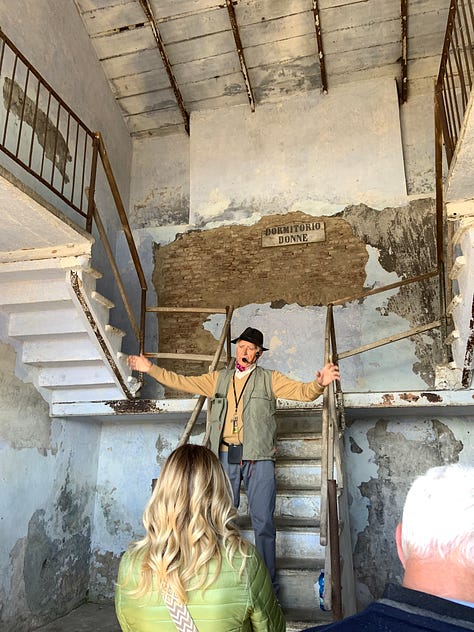The Hard Life Of Rice Paddy Weeding Female Workers Called Mondine
The photo you see is quite famous and not very old: the girl is dressed in shorts, which has not been allowed for women in our societies for a long time. Previously, women only wore skirts.
Not too far from Turin, near the village of Livorno Ferraris, there is a picturesque farmhouse with an adjoining building that once served as a dormitory for women who came to work in the rice fields. Today, the owners of the farmhouse and the dormitory collect the memories of an era in Italian rice production that lasted 100 years. The work of the weeders.
The woman in Italy was above all a free workforce from the beginning of the time. She cost much less than a mule and could be exploited without too many worries. Even if in times long gone, life was hard everywhere, not just in Italy.
The women who worked in the rice fields ranged from 13 to 50 years old. They worked 40 days a year and came there from many regions of Italy from the late 19th century to 1960.
This time they spent walking in waters full of snakes, leeches, and mosquitoes, working 14 hours a day for 85 cents. Behind them walked men who monitored them and beat them with sticks — so as not to recall other mistreatment reserved for the less obedient. Among the punishments was, for example, leaving the unfortunate woman without food. They could also have been raped or killed.
Sponsored By

The grass of the rice like wheat scratches the skin, and after a short time, the bare skin becomes covered in hives, so the women had to cover their legs and arms with kind of leggings and handles. They had hats to protect them from the scorching sun, too.
The luckiest of them spent their few hours of sleep in the dormitories, which were locked in the night so that they wouldn't think of going and looking for trouble. They could only go out on Sunday afternoons when they went to the village to dance.
The less fortunate had to look for accommodation and waste time getting there from work and then wake up earlier to go to work.









Video documentary in Italian https://www.youtube.com/watch?v=iQ7WZxnwRLc
I read a memoir by a rice weeder, and she said that despite everything they considered themselves lucky because, after all, they returned home with money that they otherwise had no chance of earning.
The lady in the documentary (⬆︎) says that at the end of the work, the farmer gave them rice and money. In the year when she went to work with her two sisters, they brought home 120 kilos of rice, and with that money, her mother was able to marry one of her sisters.
Curious is that it was precisely these women who were the first to fight for their rights, and after years of real fighting they were the first to obtain the working day length of 8 hours (1906-09).
The guide told us that the rice weeders in the fields sang songs like “Bandiera Rossa” (perhaps “Bella ciao” which, it is said, was originally the song of the rice weeders). And the parish priest of the church began ringing the church bells with all his strength, trying to make them stop.
Another curiosity of this battle was that the first people who were against the women's protests were their husbands.
At first, they only threatened not to work and were scattered with the soldiers on horseback. Then they got on the tracks, preventing the train from passing (and among other things it was the second line on Italian territory, it led from Turin to Novara). The train driver had been ordered to go ahead and kill the woman, but he didn't do it. The soldiers left their horses and ran away...
Film “Riso Amaro” (Bitter Rice; with English subtitles here) https://www.dailymotion.com/video/x8naz2l
Our walk around Tenuta Colombara lasted three hours. At 1pm we were hungry but also very curious to try the typical dish of the area called panissa. If you are interested in what it is, read my article Panissa Vercellese , A Typical Piedmontese Dish From Rice And Beans To Cook This Evening






